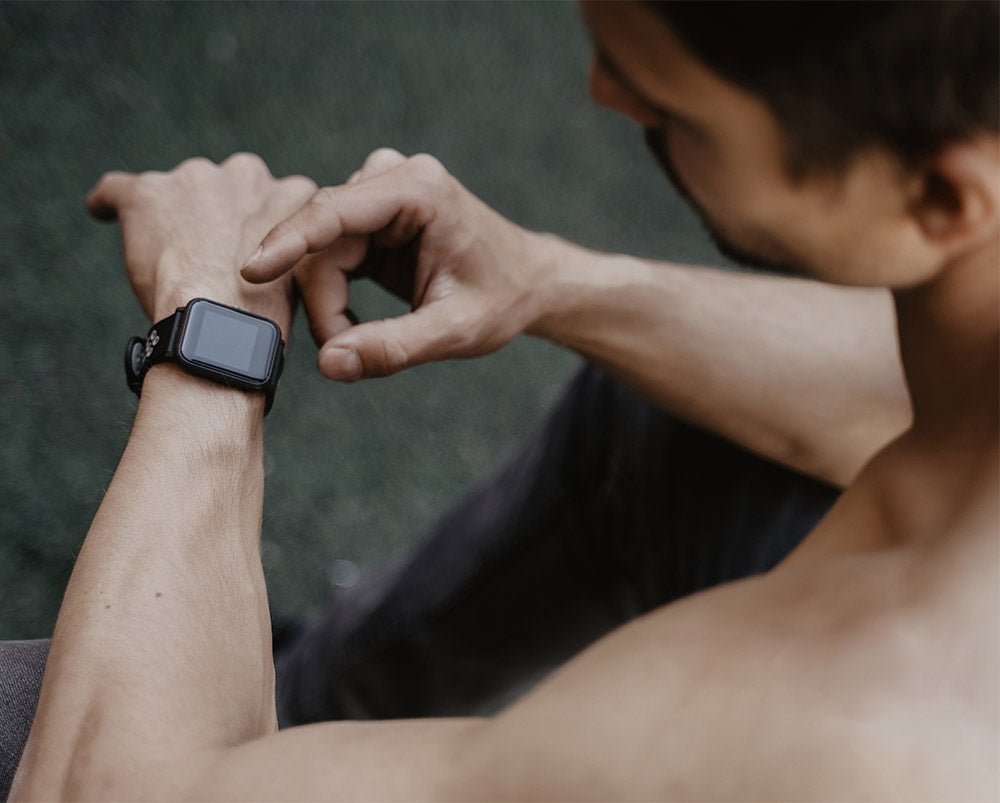Your Complete Guide to 2023 Top Heart Rate Monitor
Are you looking for a reliable and accurate heart rate monitor to keep track of your fitness goals? With so many options on the market, it can be overwhelming to find the right one for you. In this blog post, we will cover everything you need to know about the top heart rate monitor of 2023. From what to look for in a heart rate monitor, to the differences between electric and optical monitors, we have got you covered. We will also share the best heart rate monitor according to specific needs such as senior citizens, triathletes, those on a budget, and those with cardiovascular issues. We will also highlight the differences between the chest strap and armband HRMs, and provide a comprehensive overview of heart rate monitor. Read on to find the perfect heart rate monitor to achieve your fitness goals in 2023.
What to Look for in a Heart Rate Monitor
Looking for the perfect heart rate monitor (HRM) can be a daunting task. With so many different models available on the market, it can be tough to decide which one is right for you. In general, heart rate monitor offer a variety of features, ranging from wrist-based to GPS enabled. Deciding which one to choose depends on your needs and preferences.
When looking for a heart rate monitor, it is essential to consider the purpose of use. If you are concerned about your heart health, you may find appointments with heart rate monitor specialists in your area helpful. These professionals can guide you through the process of choosing a heart rate monitor that suits your needs.
Heart rate monitor can help detect and track irregularities in the cardiovascular system. Hence, it is important to look for a gadget that allows you to track your heart rate (HR) during activity and rest. With the right heart rate monitor, you can achieve your fitness goals as well as keep track of your cardiovascular system.
What are the benefits of wearing a heart rate monitor?
Wearing a HMR can provide several benefits, including more accurate tracking and analysis of your HR during exercise or daily activities. This can help you better understand your fitness levels and set more specific goals. Additionally, tracking your HR can help you avoid overexertion or undertraining, which can lead to injury or lack of progress. It can also serve as a tool for tracking progress and keeping you motivated to continue working towards your fitness goals.

Accuracy of Heart Rate Monitor
A heart Rate Monitor is a valuable tool for those looking to accurately measure their HR during activity. Most HRMs offer an accuracy range of 30-250 beats per minute (BPM), making them ideal devices for athletes and fitness enthusiasts. Advanced HRM models offer multiple target zones and can be pre-programmed for various workouts. GPS-enabled HRMs go one step further and provide elevation and navigation information, allowing for even more precise readings. Some HRMs even come with foot pods that can be attached to shoelaces to measure speed, distance, and cadence.
Differences Between Electric & Optical Monitors
HRM has come a long way in recent years and now offers a range of features and tracking options. When it comes to choosing a tracker, one factor to consider is the technology used to read your HR. Electric heart rate monitor use electrical pulses, while optical monitors use light to read your pulse. The former measures electrical activity in the heart and is usually more accurate, while the latter measures the variance in blood flow. Chest strap gadgets use electrical technology, while armband and watch-style trackers use optical sensors.
It's worth noting that heart rate monitor can connect via ANT+ or Bluetooth Low Energy using open standards. Knowing the differences between electric and optical heart rate monitor can help you choose the best one for your needs. While both are useful, each has its advantages and disadvantages. So, it's important to weigh your options and choose the one that suits you best.
Is an ANT+ or Bluetooth heart rate monitor better?
It depends on your personal preferences and the devices you plan to use it with. ANT+ heart rate monitor tend to have a longer battery life and can connect with multiple devices simultaneously. On the other hand, Bluetooth heart rate monitor is often more widely compatible with smartphones and fitness trackers.
Consider your specific needs and compatible devices before choosing an ANT+ or Bluetooth heart rate monitor. Both can provide accurate data for tracking your fitness goals.

Should You Choose an Arm Band or a Chest Strap Heart Rate Monitor?
It ultimately depends on personal preference and what feels most comfortable for you. Armbands and chest strap heart rate monitor both have their pros and cons. Armbands may be more convenient and comfortable for some, while chest straps may provide a more accurate reading. It's important to consider the type of exercise you'll be doing and the fit of the device before making a decision. Ultimately, the key is to choose a heart rate monitor that you'll actually use consistently and that will help you track your progress towards your fitness goals.
Best Heart Rate Monitor for Seniors
When it comes to heart rate monitor for seniors, wrist-based heart rate monitor that are also GPS-enabled are often the best choice. Resting HR for seniors can vary, but their resting heart rate is generally higher than those of adults. Wrist-based heart rate monitor is reliable in tracking HR, and they are also more comfortable to wear than chest strap trackers. While tracking your HR, if you notice an unusually fast or slow HR, don't hesitate to call your healthcare provider. Keeping track of your HR is important for seniors to maintain good health, especially those with heart-related illnesses.

Best Watch-Style Heart Rate Monitor
Wrist-based heart rate monitor is a popular choice these days, especially with the availability of advanced features like target zones, speed, distance, cadence tracking, and GPS receivers in many models. These gadgets are ideal for individuals who engage in workouts such as running, cycling, hiking, or any other activity requiring HR tracking. While Bluetooth chest straps are a necessary accessory to improve accuracy, some models come equipped with built-in sensors, providing accuracy with real-time tracking. Consider purchasing a watch-style tracker that is both comfortable and water-resistant, with features such as automatic HR tracking, calorie tracking, battery life, data accuracy, and sync capabilities perfect for swimmers, runners and anyone who likes outdoors.
Best Heart Rate Monitor for Runners
Wrist-based and GPS-enabled heart monitor is a popular choice for runners. When finding the best heart rate monitor, runners should consider features such as data accuracy, battery life, and compatibility with smartphones. Bluetooth HRMs are ideal for runners as they don't require an adapter. Runners should also look for features such as interval heart rate training, customizable alarms, and recovery time estimation. Some popular brands for HRMs for runners include Wahoo Fitness, Zwift, Runtastic, Runkeeper, and UA Record. Look no further as we have your complete guide to the best HRMs for runners in 2023.
Best Heart Rate Monitor for Cyclists
Cycling is a high-intensity workout that requires keeping an eye on fitness data and progress. Heart rate monitor is essential for cyclists to keep track of their HR and maintain their HR within the optimal zone. Bluetooth HRMs that do not require an adaptor are preferable for smartphone integration. Although, a power meter and a heart rate monitor should both be used when tracking cycling performance. The Scosche Rhythm24 is an affordable and waterproof heart rate monitor that is an excellent option for cyclists. It comes with LED lights that indicate which HR zone the user is in, enabling them to track their progress accurately.

Best Heart Rate Monitor for Peloton Users
Heart rate monitor is essential for Peloton users who want to track their progress and improve their workouts. Peloton offers its own arm-band heart rate monitor that connects via Bluetooth, has two sizes, and has a 10-hour battery life. Additionally, a wrist-based and GPS-enabled HRM is recommended for Peloton users who want more accurate data. Bluetooth HR sensors, such as chest straps, are also an option for those who prefer them. The type of heart rate monitor you choose ultimately depends on your personal preference, comfort, and your Peloton workout objectives. A heart rate monitor can help you to measure your effort more appropriately, reach intensity goals faster, and even predict illness or exercise-induced fatigue.
Best Heart Rate Monitor for Triathletes
For triathletes, both Bluetooth and ANT+ HRMs are good options. Advanced models offer 3-6 target zones that allow customization of your workout. Indicator LED lights of a heart rate monitor show athletes which zone they are operating in, and this vital information helps them to manage their training better. GPS enabled wrist-based heart rate monitor offer distance tracking, and elevation metrics and map your route, making them a popular choice for triathletes. If you own an indoor cycling bike or would like to use Peloton or other fitness apps, you may choose a popular fitness tracker/hardware that is compatible with these third-party apps to track your progress.
Best Budget Heart Rate Monitor
Heart rate monitor is becoming increasingly popular among fitness enthusiasts and professionals alike. The CooSpo H808S chest strap heart rate monitor is an excellent budget option that connects to various third-party fitness apps. It provides up to 300 hours of battery life and also has an LED light to indicate when it is connected. Heart rate monitor is commonly purchased by US public schools, colleges, and universities, making CooSpo an ideal choice for budget-savvy educators. Additionally, wrist-based and GPS-enabled heart rate monitor is a popular picks among professionals. It's a good idea to compare prices and features to find the best budget-friendly option. Finally, Heart Rate Variability (HRV) is an important measure utilized by Apple watch and other health trackers, which can help individuals track and achieve their fitness goals.

Best Chest Strap-Style Heart Rate Monitor
Chest strap-style HRMs are known to provide highly precise readings compared to other types of wearables, such as smart rings or watches. A widely preferred model in this category is the Wahoo Tickr X, providing high accuracy, comfort, and over 500 hours of battery life. When choosing a heart rate monitor, make sure it is compatible with your usual fitness tracking apps. Additionally, consider extra features that you may require, such as an LED display or built-in memory storage. These will impact the price of the device and must be considered carefully before making a purchase. Overall, investing in a high-quality comfortable chest strap style heart-rate monitor can be an excellent addition to your fitness routine, providing valuable insights into your overall health and well-being.
Best Heart Rate Monitor for Those with Cardiovascular Issues
If you suffer from cardiovascular issues, it's important to track your HR regularly. For those seeking a HRM, wrist-based trackers are often the best option as they are very accurate, easy to use, and can be worn all day. Apple products have the unique benefit of tracking HRV, which can be particularly useful for those with cardiovascular conditions. Resting HR is typically between 60 and 100 beats per minute, making it an important indicator of the overall cardiovascular system health. Buying HRM with features like GPS-tracking, monitoring HRV, and tracking resting HR can be particularly helpful. Ensure that the HRM you choose has a comfortable strap and a long battery life so that it can be worn for extended periods.
Best Bluetooth Compatible HRMs
Bluetooth-compatible heart rate monitor has become increasingly popular, allowing athletes and fitness enthusiasts to track their HR while pairing with a variety of devices, including phones and smartwatches. Before purchasing a heart rate monitor, it's important to ensure that it is compatible with the operating system of the device you plan to pair it with. Checking app compatibility is also important to ensure that you can track and analyze your HR data with your preferred app. HRMs that connect via ANT+ or Bluetooth Low Energy (BLE) using open standards are supported by Zwift, a popular online training and racing platform. These monitors may vary in their features such as GPS, chest straps, and wrist-based designs, so it is essential to choose the one that fits your needs and preferences.
Chest Strap vs Arm Band HRMs
When it comes to HRMs, there are two main types: chest strap and armband/wrist-worn. Chest strap HR trackers measure the electrical activity of the heart through electrocardiography, making them the most accurate type of HR monitor. Meanwhile, armband and wrist-worn trackers use photoplethysmography to measure blood flow through the skin, but they can provide less reliable readings during high-intensity activities. Though chest strap HR trackers are considered less user-friendly, they can be more comfortable to wear for longer periods of time. On the other hand, wrist-worn HRM may come with additional features such as visible LED lights or a display screen that shows your HR. Choose the type of HRM that best suits your needs and level of activity.
Conclusion
HRMs have come a long way since their initial introduction. They have the most accurate results so far, more comfortable and easier to use, and are more accessible to everyone. However, with so many options available, it can be challenging to decide which one is the best fit for you. Our comprehensive guide has compiled the top HRMs of 2023 and provided a breakdown of their benefits, features, and usage. From chest straps to earbuds, we’ve got you covered. Some of the best HRMs in 2023 are Garmin, Wahoo, Myzone. These brands offer the versatility of different devices, the durability of sports watches and simplicity. Easy connectivity, heart rate data, calories, rechargeable battery, heart rate zone, stride length, pulse rate, maximum heart rate and even barometer.
Frequently Asked Questions

What is normal HR?
The normal HR for adults at rest is between 60-100 beats per minute, although it can vary depending on factors like age, fitness level, and overall health. It's important to track your HR regularly and consult with a doctor if you notice any unusual changes or experience symptoms like chest pain or shortness of breath.
What is a good resting HR by age?
Resting HR can vary depending on various factors, including age, physical fitness, and overall health. As a general guideline, a resting HR of 60 to 100 beats per minute is considered normal for adults. However, for athletes, a resting HR below 60 may be more typical. As you age, your resting HR may also decrease, with a range of 50 to 70 beats per minute being typical for those over 65 years old. It is always a good idea to consult with your doctor to determine what is a healthy resting HR for your individual circumstances.
Does HRM work with atrial fibrillation?
It can still be useful for people with atrial fibrillation, but it may not always be accurate. This is because the irregular heart rhythm associated with atrial fibrillation can cause fluctuations in HR that may not be accurately captured by a monitor. In some cases, a doctor may recommend wearing a monitor to track HR over time as part of an overall treatment plan for atrial fibrillation.
What about an electrocardiogram (ECG) monitor during physical activity?
Using an electrocardiogram (ECG) monitor during physical activity can provide valuable information about your cardiovascular system health and help detect any irregularities or potential issues. However, it is important to consult with a healthcare professional before using an ECG monitor and to follow proper usage instructions to ensure accurate readings.
How does Heart rate sensor work?
HR sensors work by detecting the electrical signals that are produced each time your heart beats. These signals are amplified by the sensor and converted into a digital signal that can be read by a device, such as a smartwatch or fitness tracker. The device then uses algorithms to analyze the data and accurately determine your HR. Some sensors use photoplethysmography (PPG) instead, which involves measuring blood flow by shining light through your skin and detecting the changes in light absorption caused by your pulse.
References:
- Accuracy of Optical Heart Rate Sensing Technology in Wearable Fitness Trackers for Young and Older Adults: Validation and Comparison Study
- Accuracy of commercially available heart rate monitors in athletes: a prospective study
- Smart Wearables for Cardiac Monitoring—Real-World Use beyond Atrial Fibrillation
- Resting heart rate and wearable technology
- Accuracy of wearable heart rate monitors in cardiac rehabilitation
- Accuracy of Wrist-Worn Activity Monitors During Common Daily Physical Activities and Types of Structured Exercise: Evaluation Study
- Accuracy of commercially available heart rate monitors in athletes: a prospective study
- Variable Accuracy of Wearable Heart Rate Monitors during Aerobic Exercise





Leave a comment (all fields required)